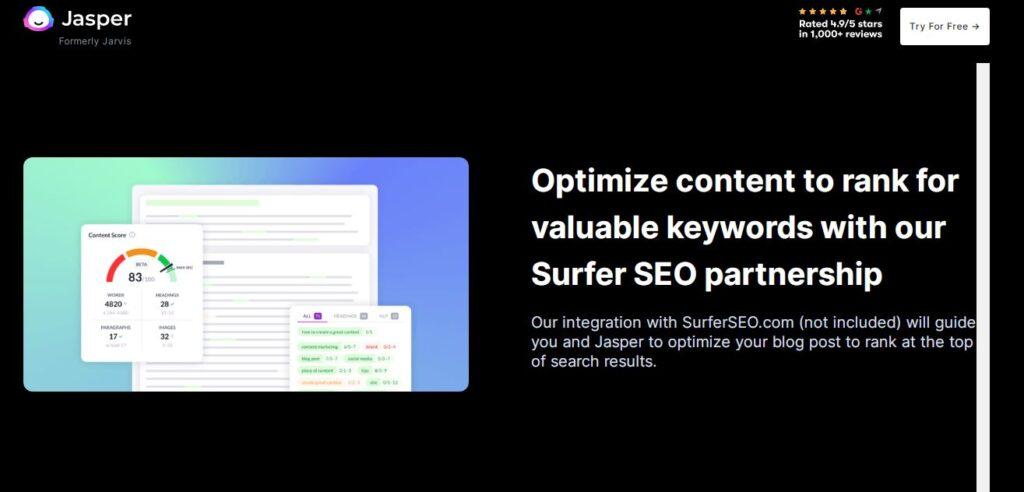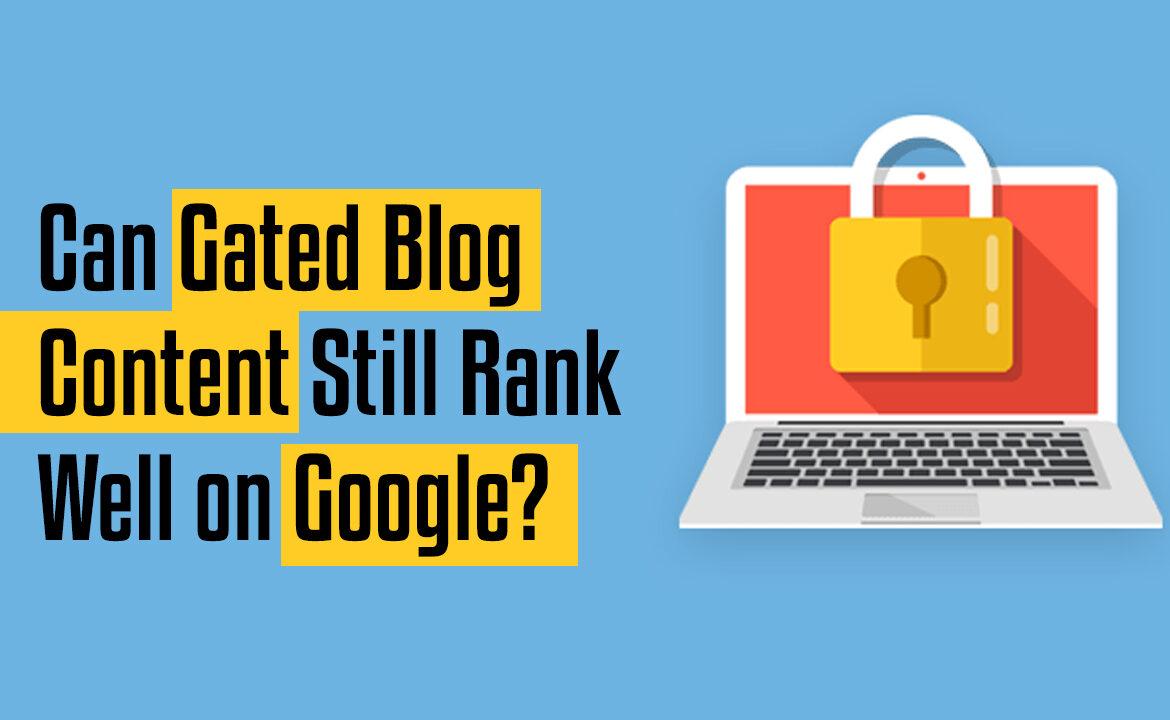Can Gated Content Still Rank Well on Google?
There’s been a lot of speculation in the SEO community lately about the impact of Google’s most recent algorithm update on gated content. Some people are saying that it’s now impossible to rank well with this type of content, while others maintain that it still works if you do it right. So what’s the truth? In this article, we’ll take a look at the evidence and see what conclusions can be drawn.

Gated content has been around for quite some time, both on and offline. Members-only clubs and mystery fraternities are the original gated content in a sense.
You can create membership sites, sure, but you have things like the old Facebook Like gates as well. Facebook enabled you to build a landing page in front of your page years and years ago. Users may be enticed by the content promises made on your landing page, but in order to view any of it, they must first subscribe to your account.
This resulted in a large number of issues. Some websites would engage in this by creating just a few relevant pieces of information and an excessive amount of irrelevant garbage, enticing visitors to follow with a bait-and-switch.
Some people would just steal material, and it was difficult to even report them since they had to be followed to view it. You also had a lot of churns as customers needed to follow you in order to find out if your content was worth following, and they could quickly remove their connection if it turned out that it wasn’t.
Although Facebook later discontinued the capability to restrict pages, that doesn’t imply gated content went away.

Jasper.ai is a tool that can help you track reader engagement with your gated content. Jasper.ai, you can see which pieces of content are most popular with your readers, and use that information to improve your SEO strategy. Additionally, Jasper.ai can help you track which keywords are most effective at driving traffic to your site, so you can optimize your content accordingly. Ultimately, Jasper.ai is a valuable tool for understanding how Google’s algorithm update has affected your gated content, and for making changes to ensure that your content is still ranking well on the search engine.
Also, read How to Write a Good Blog Post: The Ultimate Guide, 11 Ways To Differentiate Your Small Business From Giants Out There!, How to Make Use of Jasper AI Content Improver?
Gated Content
Gated content is content that is hidden behind a paywall or registration form. It is used by publishers and content marketers as a way to collect leads or sell subscriptions.
The recent update to Google’s algorithm has caused some concern among publishers who use gated content. The update, which is designed to penalize sites that display “intrusive interstitials” (pop-ups and other forms of intrusive advertising), could also impact sites that use gated content.

So far, there has been no definitive word from Google on how the algorithm update will affect gated content. However, there are a few things we do know that can help us make an educated guess.
First, it’s important to remember that Google’s ultimate goal is to provide users with the best possible experience. If a user clicks on a result and then immediately hits a paywall, that’s not a great experience.
Second, Google has said that the algorithm update is designed to penalize “intrusive interstitials.” It’s possible that gated content could be considered intrusive if it’s not immediately apparent to the user that they will need to take an action (such as filling out a form or subscribing) to access it.
Third, we know that Googlebot can index and render gated content. This means that Google is able to see and understand the content behind a paywall.
So what does all this mean for publishers who use gated content? It’s still too early to say for sure, but it’s possible that the new algorithm could have a negative impact on the ranking of gated content.
However, there are a few things you can do to minimize the risk:
-Make sure your gated content is high quality and relevant to your target audience.
-Make it easy for users to find your gated content. Don’t bury it behind several clicks or hide it in an unintuitive place.
-Consider using a less intrusive form of gating, such as requiring users to subscribe to your newsletter before accessing the content.
Ultimately, only time will tell how the new algorithm update will impact gated content. In the meantime, take steps to ensure that your gated content is high quality and easy for users to find and access. Doing so will help reduce the risk of any negative impact on your rankings.
Also, read A comprehensive guide to Custodial and Non-custodial NFT marketplace 2022, Technical Writers: What They Do and Why You Might Need One, AI Industry: A Comprehensive Guide to the Types of Companies Involved
Use gated content if…
- You’ve created a strategy for converting new consumers. It’s a bad idea to spend time and effort gathering email addresses that are hanging out in your email marketing software. There must be a clear marketing funnel or plan in place to utilize signups, whether it’s through your main newsletter or your sales sequence.
- You may establish a piece’s role in the customer journey. Gated content may help you reach more people or gather new leads, but a single bit can’t accomplish both. The subject, format, and how many hoops people must jump through to download should all be proportionate to their position in the buyer journey. Try starting with broad topics, short pieces, and simple downloads at the top of the funnel. Niche reports that provide in-depth information, as well as the ability to capture additional subscriber data for segmentation, are ideal for the bottom of the funnel.
Types of Gated Content
There are a number of various methods to restrict material, and many of them are focused on certain kinds of information.

The most popular gated content approach is to maintain a blog as usual, with all of your published pieces readily available. After that, you put up another “gating” on additional “bonus” material. Blog posts, reviews, and press releases are accessible without restriction on your website, whereas ebooks, manuals, and webinars are gated.
The quota gating approach is used by some bloggers. This is the case with the media. Free users, usually identified via IP address or cookies, get to see 10 articles each month. Any other post they try to view will be blocked after they’ve seen ten different postings, requiring them to register or sign up.
There are many types of gated content, but some of the most common ones include:
1. Registration forms: To access this type of content, visitors must provide their name and email address.
2. Downloadable files: Content is only available after a visitor downloads a file.
3. Quizzes or surveys: Visitors must answer a question or take a quiz before they can view the content.
4. Contest entries: In order to enter a contest, visitors must provide their contact information.
5. Unlike a lot of other forums, MMORPGs have a members-only area where more advanced material is kept from the general public. This includes videos and other resources, which are typically only accessible to members. The same goes for product-specific knowledge base articles, however, they aren’t always required to be gated.
6. Webinar registrations will be limited to 50 people. You can use Webinar Registration Confirmation as a gate. This assists doubly so if you want to make the webinar exclusive and only have 50 seats available, or anything similar. You may restrict access while also functioning as a sort of RSVP system by using gating.
7. Ebooks, of course, are a form of gated content that has been around for ages. Many marketing firms provide ebooks as part of a simple opt-in subscription. Of course, if you’re offering particularly high-quality material, you may erect a paywall in place of the gate.
Also, read Blockchain Technology or Machine Learning Is More Booming In 2022, Google AI Detection 2022: Can Google Detect AI Written Articles?
Pros And Cons Of Gated Content

Pros:
1. Gated content can help you capture leads and build your email list.
2. Gated content can help you generate traffic from other sources, such as social media or search engines.
3. Gated content can help you track reader engagement and see which pieces are most popular.
Cons:
1. Gated content can be annoying to readers who have to enter their information before they can read the content.
2. Gated content may not be as effective at generating leads as ungated content.
3. Gated content can be difficult to track reader engagement if you’re not using a tool like Google Analytics.
The SEO Considerations of Gated Content
One of the most common drawbacks of gated content, as recognized by marketers, again and again, is that it provides little to no SEO value. In reality, because so much of your material will not be visible to Google, it will most certainly harm your SEO.
Google can’t see the content if you have a content-blocking gate that prevents anyone from accessing it until a form is completed. Bots from Google will never complete a lead generating questionnaire, therefore they won’t be able to view the information on the other side.
If you have a gate that adapts to the individual viewer, such as Medium’s gate, Google can still see the material just fine. You may also add Google’s crawlers as an exemption to the gate so they can view everything without being blocked. There is no SEO impact because it is all accessible at any time to most people in this sort of scenario.
You might also use a script to deliver Google the material while restricting access to it. Although this is sometimes an excellent idea, it’s not always a good idea. Google may view it as cloaking and penalize you for doing so. It’s not advised and will damage your website’s performance in search engines.
They’ve had years of experience with cloaking, and now that Chrome is sending user data back to them, they’ll know if you’re directing people to view a different version of your website then search engines are seeing anyhow.
Since Google’s recent algorithm update, it has been harder for gated blog content to rank well on the search engine. However, there are still ways to make your content visible and engaging to users. By using relevant keywords, optimizing your title and meta tags, and promoting your content through social media, you can still attract organic traffic to your site. Google’s algorithm update may have changed the landscape of SEO, but there are still ways to ensure that your content is seen by users.
Also, read Reasons Your Blog Posts Not Showing Up on Google: and What to Do About It, Do The Best AI Copywriting Tool Worth the Hype When Copywriting?, The Most Exciting NFT Projects For 2022

